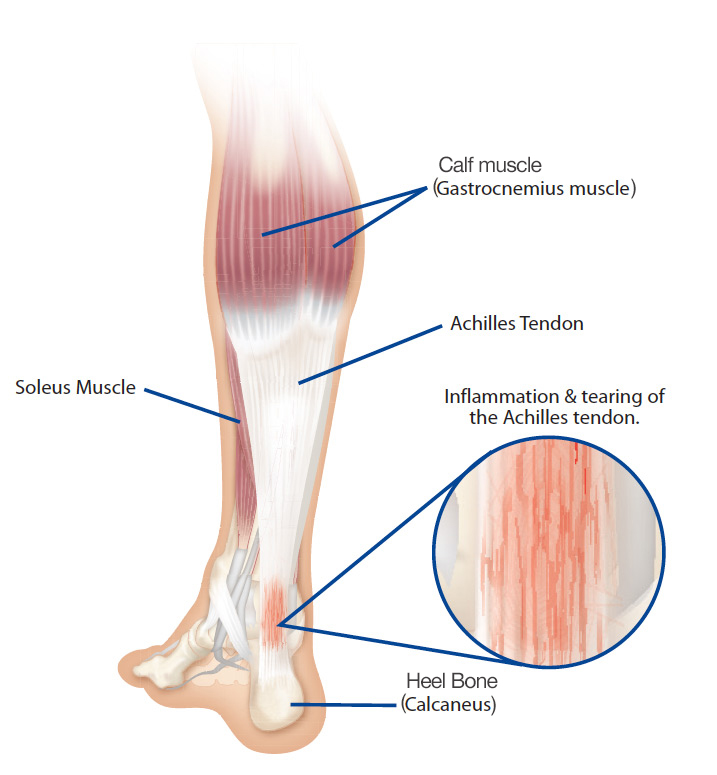
Every runner at one point or another will experience aches, twinges and soreness, either during or after their workout. It is then the runners decision to either continue through these disturbances of either arch pain, heel pain, a tight hamstring or a nagging pain in the knee, or rest until the inflammation has gone.
As soon as that knee pain or foot pain kicks in, it is good practice to act on the problem and reduce the mileage and intensity of your runs and increase stretching, weight training and regular foam-rolling.
What is Achillies Tendonitis
Achillies Tendonitis is the inflammation, irritation and swelling of the Achilles tendon, which is attached to the calf muscle at the attachment to the heel bone.
The underlying cause of Achilles tendonitis is the result of aggravation caused by pronation or supination – or a combination of both. As the heel bone inverts at heel lift, the calf muscles assist and as the foot accelerates into an excessively pronated or supinated position, the heel bone is everted or inverted causing medial/lateral tendo-achilles traction. This results in transverse shearing of the tendon and sheath, leading to inflammation and pain being experienced.
Runners who increase their training and usually uphill training often have tight calves are more likely to suffer with Achilles Tendonitis.
Treatments
• Applying ice to the calves and stretching the area by standing on the balls of your feet on a step, while rising the heels up and lowering them can help.
• Heating the calves before each run with warm water or heating pack
• Massaging with a foam roller.
• Heel lifts are a possible temporary solution. They restrict the Achilles’ range of motion, so can be helpful to get over the initial hump of the injury, but should be taken out after you are recovering.
• Your casual/work footwear could be aggravating your tendon if you are wearing low-heeled shoes, a higher heel of a more traditional shoe. When the tendon is healthy again you should gradually run in a low heel shoe to help your Achilles to move through its full range of motion.
• Avoid ibuprofen, this can slow the healing process down.

Leave a Reply